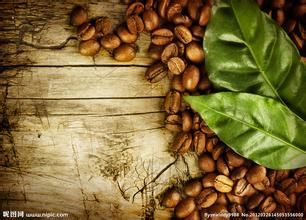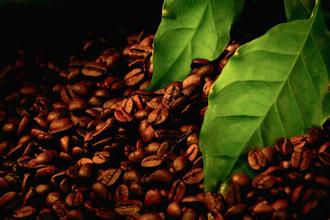An introduction to the characteristics of the flavor description of the citrus-flavored Sidamasha Chiso producing area in Ethiopia
Ethiopia grows coffee in different climatic zones, so it has more than 140 farm varieties, and fresh coffee is produced all the year round. The quality of Ethiopian coffee varies according to different elevations and regional ecological environment. The Harar coffee in the southeast highland is a typical Muha coffee with strong aroma; the coffee produced in southwest Wollega has a rich fruity flavor; Limu coffee has wine and spice flavor; Sidamo coffee is mild, full-bodied and sour, while Yirgacheffee coffee has floral flavor. Taste Yega Xuefei, chocolate and sour taste more intense, like lemon flying, with a trance of flowers.
Interestingly, Ethiopians also put pictures of horses on the coffee package to show the purity of the coffee. It is said that in the era when horses were the main means of transportation, Ethiopians were proud that Ethiopia had the best thoroughbred horses in the world. Now they give this pride to Ethiopian coffee, "high-quality coffee should be as pure as thoroughbred horses". As a result of adhering to this concept, the taste of coffee here is still so mellow.
These are the questions we have sorted out for you today about Ethiopian coffee. If you want to feel the different feelings of this style of coffee, then you might as well go to the restaurant and try a variety of coffee. I believe this kind of coffee can bring you a different sense of beauty: Sidamo, 1400 to 2200 meters above sea level, is a famous boutique coffee area in southern Egypt, bordering Kenya. There are two kinds of water washing and sun exposure. The washed sidamole is light green and the beans are small and oval. The palate has citrus aromas with a hint of raspberries, as well as pleasant elegant sweet and sour flavors, sweet grapes and a chocolate finish. Sun Sidamo's bean color is yellowish green, the bean phase is not neat, and it is common to lack carob beans. Properly handled sun Sidamo flavor is not discounted, in addition to the citrus flavor of washed beans, there is a strong fruit aroma. This is related to the fact that coffee beans are dried in the pulp and fermented for up to two weeks. This flavor is not commonly found in washed beans. However, once the sun is not handled properly, it is easy to have a fishy smell and lose all its elegant aroma. Sun beans are not good if they don't have a strong fruit flavor.
There are many legends in this area that King Solomon's lost treasure is said to be buried in the Deva Valley in the south. There are dense forests here, and there have been wild coffee forests since ancient times. It is a major feature for farmers to select excellent varieties of coffee trees from woodland and transplant them to their own farmland. Shaquiso is the most famous coffee producing area in the south of Sidamo. Ethiopian coffee tastes like lemon and honey. According to the above four different production methods, Ethiopian coffee can be divided into nine major coffee producing areas, including five boutique coffee areas: Sidamo, Yegashefi, Harald, Lim, Lekamp, and four general commercial bean producing areas: Gemma, Illu Gbagbo, Tibby, and Bekaa. The sun or water washing methods are used in each district, and different treatment methods also affect the flavor. Egypt traditionally uses the ancient sun treatment, but since the introduction of water washing technology in 1972, it has gradually increased the ratio of water washed beans for more than 30 years. At present, the sun method accounts for about 80%, and water washing accounts for about ⒛%. Sidamo and Yejia Xuefei are mainly washed with mouth drying as a supplement, while Lim and Tiebi producing areas are mainly washed with water. The sun-dried beans are mainly Harald, Gemma, Lekamputi and Yilu Gbagbo.

Important Notice :
前街咖啡 FrontStreet Coffee has moved to new addredd:
FrontStreet Coffee Address: 315,Donghua East Road,GuangZhou
Tel:020 38364473
- Prev

Flavor description of Ethiopian Coffee Manor with excellent texture introduction of varieties in producing areas
Growing in the southernmost Ethiopian plateau at an altitude of 4600-7200 feet (Sidamo province), southeast of Jima, just south of the capital, usually sweet, but also loved by most people, its annual output is about 225000bags/60kg, bean body is smaller than Longberry, green with ash, in the Sidamo sun drying field, coffee is placed in a hemp net wooden frame, workers take turns in the sun exposure, manual
- Next

Introduction to the description and treatment of the flavor of jasmine fragrant Yega Fischer Manor Coffee varieties in the producing area
Yejassefi's coffee trees were planted by European monks (a bit like Belgian monks growing wheat to brew beer) and were later transferred to farmers or cooperatives. Yejia Xuefei is actually constructed by surrounding coffee communities or cooperatives, including Edido Idido, Hafusa Harfusa, Hama Hama, Biloya, near Fog Valley Misty valley, all washed with water, but also
Related
- Does Rose Summer choose Blue, Green or Red? Detailed explanation of Rose Summer Coffee plots and Classification in Panamanian Jade Manor
- What is the difference between the origin, producing area, processing plant, cooperative and manor of coffee beans?
- How fine does the espresso powder fit? how to grind the espresso?
- Sca coffee roasting degree color card coffee roasting degree 8 roasting color values what do you mean?
- The practice of lattes: how to make lattes at home
- Introduction to Indonesian Fine Coffee beans-- Java Coffee producing area of Indonesian Arabica Coffee
- How much will the flavor of light and medium roasted rose summer be expressed? What baking level is rose summer suitable for?
- Introduction to the characteristics of washing, sun-drying or wet-planing coffee commonly used in Mantenin, Indonesia
- Price characteristics of Arabica Coffee Bean Starbucks introduction to Manning Coffee Bean Taste producing area Variety Manor
- What is the authentic Yega flavor? What are the flavor characteristics of the really excellent Yejasuffi coffee beans?

